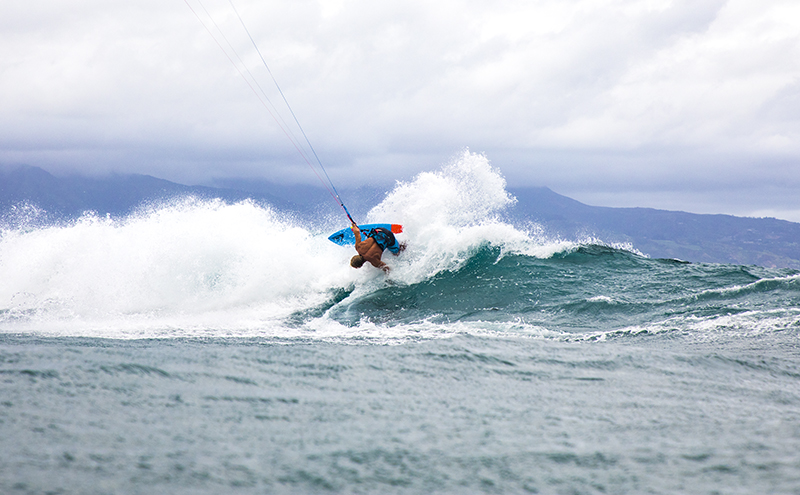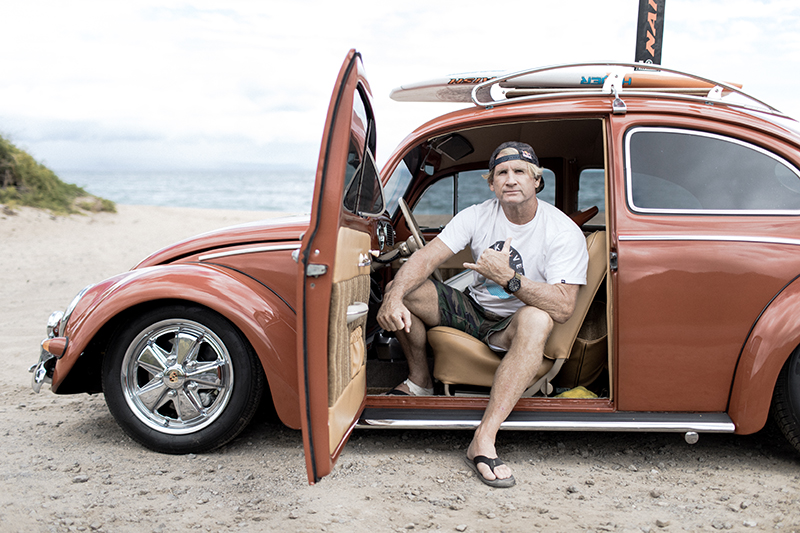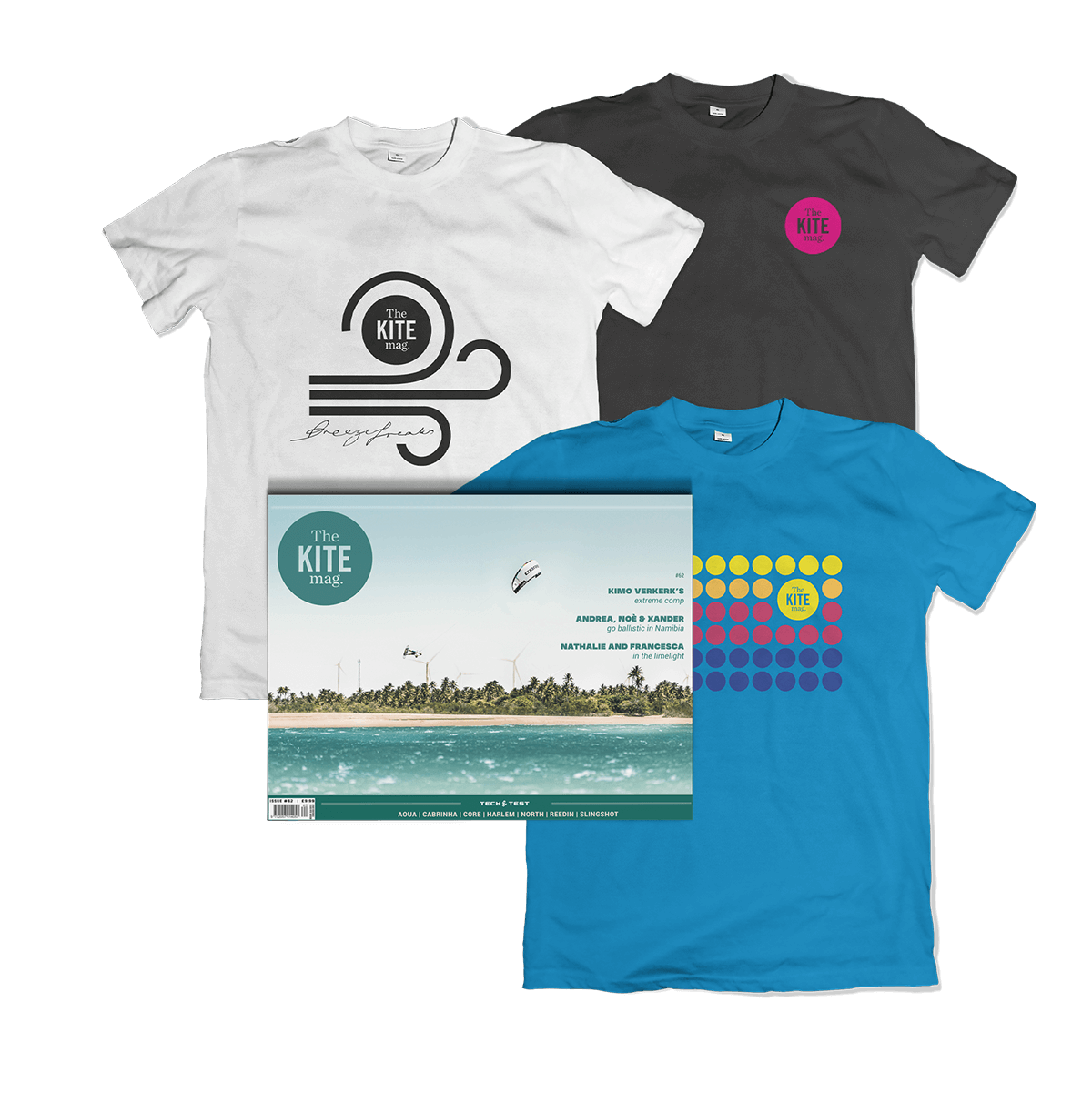This year sees Naish Kiteboarding celebrating 20 years in the business. Robby Naish was an early adopter and took a pretty big gamble at the time to throw his chips on the table and get behind this ‘new’ sport. He took some time out to reflect on the ride over the last two decades.
This year Naish celebrates its 20th year in the kiteboarding business. Did you imagine the sport would get so big and Naish Kiteboarding would still be going strong 20 years on?
Kiteboarding has certainly developed further than I initially projected. It was pretty damn extreme in the early days. Our introduction ad for the sport was a black page that said in white letters: ‘Introducing absolutely the wrong sport for 99.9% of the world’s population’. We have come a long way and so has the sport. I am proud that we are still doing well and are still a part of such a cool sport that has improved so many people’s lives and provided so much stoke in getting people out on the water around the world.
What are your memories of first seeing the sport and of your first experiences with a kite?
At first it was just a novelty. I had been playing with kites for years, and even dabbled in making ‘windsurf muscle training kites’ for light winds because you can make so much speed and power with a kite on the beach. When we first began playing with kites on the water it was with a Sky Tiger ram air kite with handles and a long board surfboard in Kailua. We could even go upwind. But it was kooky. I saw Cory Roeseler years before we ever dreamed of ‘kitesurfing’ doing his kite ski sessions in The Gorge… He even came to the Sylt World Cup one year. But the time was just not right and nobody really took too much notice – maybe just because it was on water skis and not a surfboard. Subtle things can make all the difference. Then we began playing with the inflatables on Maui doing downwinders from Hookipa to Sprecks or Kanaha using my Jaws tow-in surfboards. Again, it was kind of a novelty…. And the one-way ride was never personally too attractive to me. A bit like downwinders on a SUP. It takes too much time to drop off a car downwind, drive a car upwind etc. Once the kites and boards were able to go out in one spot and ride and come back into the same spot, it was a game changer and when I began putting much more energy into it.
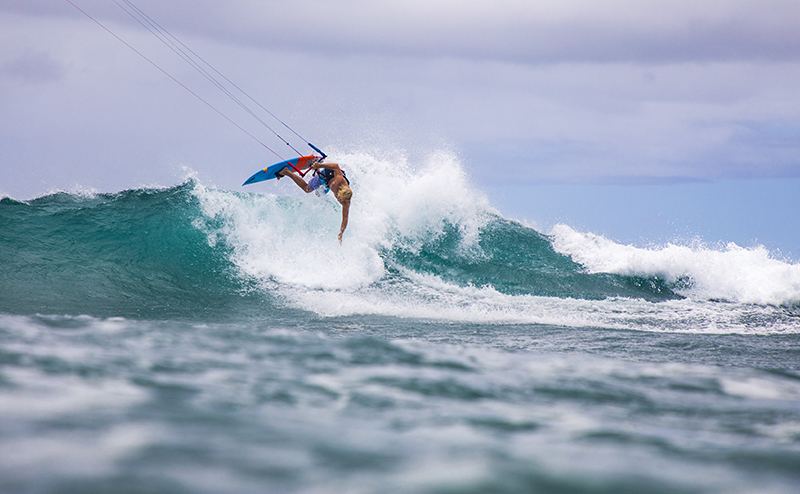
You jumped on board quickly and were one of the first brands to begin serious production of kites – did it feel like a gamble at the time and can you talk us through those first iconic kites?
We were the first brand to license the inflatable strut technology and begin developing functional higher aspect kites that were specifically designed for kitesurfing. Bruno Legaignoux, the patent owner, had the Wipika brand, but the kites were designed to drag something essentially downwind and were certainly not optimized for recreational boardriding. The AR3.5 was our first production kite, and was a convertible two-line to four-line kite. That, along with the first four-line inflatable kite, the AR-5 and the Sky Pirate kiteboards really launched the sport into the future. It was certainly a bit of a gamble, but we were having so much fun with it that we figured other people would too. And we were right there!
What would you then mark as the key products in the evolution of Naish from then to now?
The AR-5, then the X2, which really was a huge leap forward in performance. Then the Boxer, and in my opinion our Sigma Series kites, the Torch, and more recently the Pivot. On the board side, the Mutant and Alien boards were game changers, leading into the directional boards and twintips that we have today that are pretty hard to beat.
So I guess the sport is no longer, ‘Absolutely the wrong sport for 99.9% of the population’?
No, not any more. The sport has become so much safer and accessible, it’s crazy. With things like the push-away trim loop that has become pretty much an industry standard, along with the incredible depower and intuitive control that modern kiteboarding kites have today, almost anyone can learn pretty quickly and relatively safely. You seldom see people getting dragged across a beach anymore except in cases of serious rider error. In years past it was a daily occurrence.
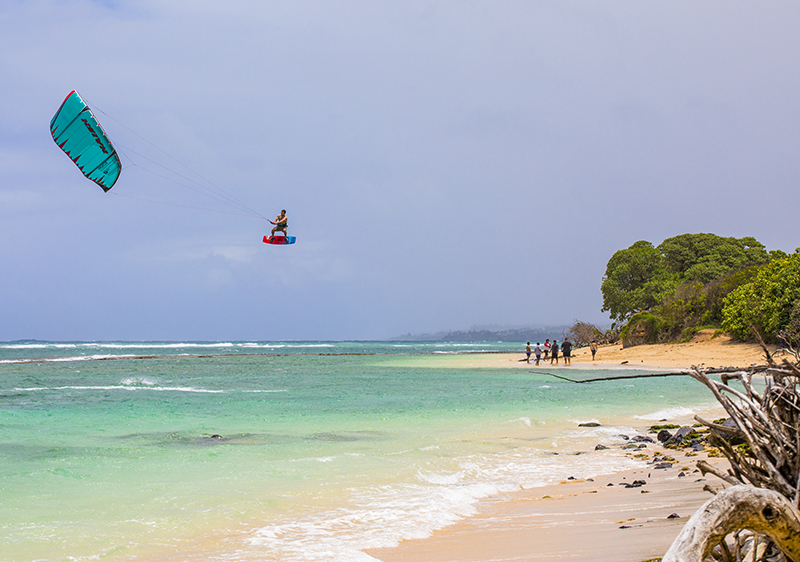
Bringing things up to the present day and you’ve tweaked your kite range over the last couple of years with a few new additions. Can you talk us through what is currently in the lineup and how you think this reflects on the direction the sport is taking?
The sport has matured. You have the ‘average kiter’ that wants a kite that has good range, intuitive steering and lots of depower and safety features. The vast majority of early entrants into the sport of kitesurfing were crossing over from other ‘extreme sports’ like windsurfing, wakeboarding, surfing etc. Today there are a lot of men and women and children who are entering the sport as their first entry into this kind of world. They might not necessarily be super sporty, fit, or even coordinated. But they are getting into it, doing well, and loving it. These people need something that they can grow with, learn, develop their skills but hopefully not outgrow too quickly, or never outgrow! A lot of people kiting these days are super happy just riding back and forth, maybe doing a little jump or transition, carve some turns etc. They do not necessarily want to boost huge jumps or go ride massive waves with their kite but some people do want to do those things. So we have to have a range of kites that covers this broad spectrum of people and styles and aspirations that exist out there.
So we have the Torch at the extreme end of the power freestyle and Big Air aspect of the sport with its five line, high aspect punch. It has become the kite that all others in the category are compared with and its legacy and competition track record back it up. From there we go to the Dash, which is a swept wing C, bridled four-line kite that has the DNA of the Torch with the versatility, depower and feel of a bridled kite. Great for both hooked-in and unhooked riding, it provides the active, engaged feel that someone riding with power and speed looks for.
On the opposite end of the spectrum is the Slash, which is a dedicated wave kite, offering linear kite speed, power and turning with great drifting ability. Its linear power delivery makes it great for riding strapless, as it won’t over react to steering or center line input and pull you off your board or shoot you down the line on a wave. This kite really excels for those riders really looking for a specific wave kite and not an all-round kite that ‘does everything’. In the middle we have the Ride and the Pivot. Both of these kites do everything really well. The Ride is better for the less advanced rider with great ‘sheet in and go’ power that comes from its two-strut design. It is perfect for people looking for a kite that will not punish them for the mistakes that all riders make as they progress though the early to intermediate stages of learning the sport. It has a broad power band, so people won’t stall it and it will not race to the ‘front of the power window’ before they are ready for it. It is still engaging and fun to ride, so they can grow with it, but not so challenging as to inhibit their fun and learning. The Pivot is the ‘do anything anywhere any time’ kite. You can ‘mow the lawn’ with it; you can waveride with it; you can ride Jaws with it (Jesse Richman can anyway) and you can win the Red Bull King of the Air with it, as Kevin Langeree did this year. Of all the kites that we have made over the past twenty years, the Pivot is the most intuitive, versatile, and best all-round kite that we’ve come up with.
Then we have the Boxer, which targets specifically riding underpowered and freeride foiling. Its single strut and lightweight frame make it a dream to ride on a six when others are on nines. It excels in delivering steady power, and its luff strut allows you to feather the kite in front of you while foiling. Having a kite that can be sheeted in and out without having the kite blast forward and back in the wind window and having a super light kite really makes a difference when you want to ride a small kite – underpowered and still maximize the fun factor.
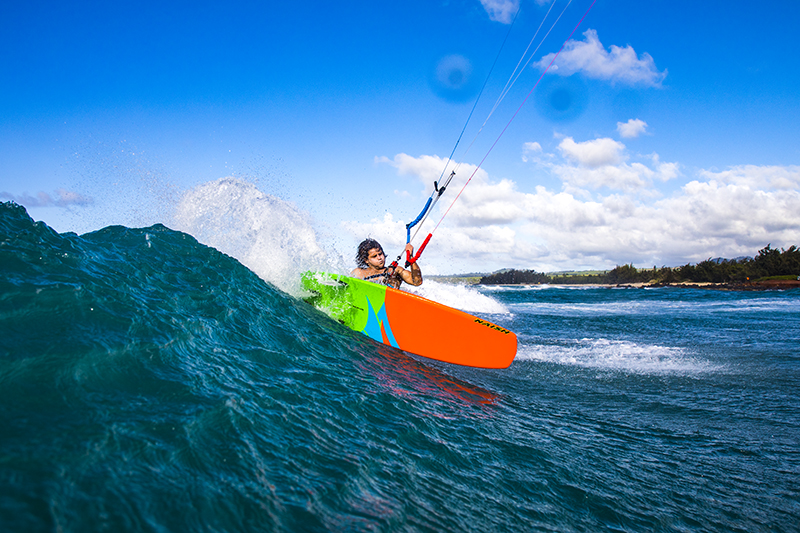
Foiling has perhaps been the biggest story of the last few years and you guys have probably generated the most hype in terms of the surf and SUP side of things with clips of Kai Lenny. What are your thoughts about the impact of foiling on the sport and what can we expect from the Naish line up?
Foiling has certainly hit that point where people are ready for it, be it for surfing, sailing, windsurfing or kiting. Although hydrofoils have been around for decades, it just seems like the time was right for people to latch onto it. I am personally loving the foils. I have been doing all these sports for a long time now, and although I still love to go fast, jump high, the foils have added a new element of excitement (and calm) to the dynamic of riding. I have really enjoyed pushing the limits of low wind windsurfing on foils, just as the foils have added a whole new dimension to lighter wind kiting. Same goes for SUP and paddle in surf foiling. I can’t get enough, and find myself leaving good waves on the North Shore to search out small crappy waves on the South Shore to go surf foiling. I injured myself kiting pretty seriously both last summer and the summer before (broken foot and broken pelvis) which put me out of any real action for about six months both times. Through this healing period foiling was the first thing that I could get into because it was no impact and easy on the body. We put a lot of energy into the second generation Thrust foils. For kiting, the new KS2 front wing and back wing design and improved fuselage highlight the modular system that we have. All of the components are interchangeable, so you can switch from kite to surf wings on the same fuselage… Or as many people are now doing, even kite with our surf wings for a slower, more flowing ride. We also have a pretty extensive lineup of hover kite foil boards for 2019, in 112, 127, 130, 145, 155 and 160, covering just about any type of kite foiling one might want to enjoy, as well as hover surf Comet and Ascend ranges that you can both surf and kite foil on. Foiling is certainly an area we have put a lot of focus and energy in to, and we are super stoked with the range.
Do you think Olympic inclusion will have a ‘drip down’ effect in terms of the general growth of the sport?
We will see in the US. I guess it depends on what formula they end up choosing for the equipment, but it certainly will not hurt. I think that it will have less effect in the USA than it will have in many other markets where Olympic sports are funded by the governments. In Asia for example, having kiting in the Olympics will massively raise the profile and number of people kite foil racing there. Same goes for many European markets where national bodies will finance the training of Olympic hopefuls. Regardless, it is going to be pretty cool racing for sure and add a new level of excitement to Olympic sailing.
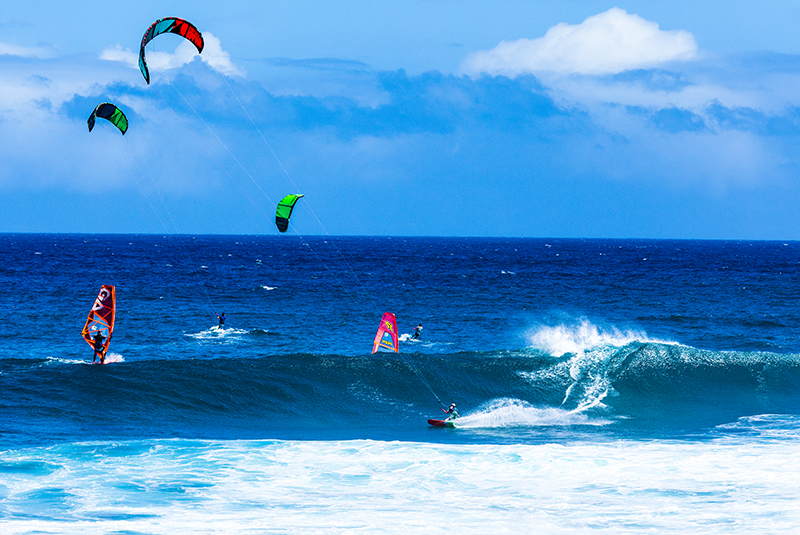
You have a well-established R&D team on Maui now – can you talk us through the key players here, and how important are these guys in keeping Naish kiteboarding at the top of the game?
Our head engineer is Damien Girardin, who has been with Naish now for longer than I can remember… He loves the sport and brings an attention to detail and constant desire to evolve and improve to his work. He stays in constant contact with our importers, team riders and opinion leaders around the world in order to keep our kiteboarding gear a step ahead. Des Walsh is his right hand man. Des has also worked for Naish since the very beginnings of the sport. He is methodical and meticulous, and is the best kite tester there is. Riding just about every day with our team and his 14 year old son Timmy, Des is the guy in the middle, balancing things between end consumer demands, team, and development goals. They work together with Ethan Koopmans here on Maui, alongside our international team guys who are constantly putting everything we build through their paces. I am the glue and constant ‘what could possibly go wrong’ that tries to hold things together!
In terms of team riders, you have some of the most respected riders in the game – people like Jesse Richman and Jalou Langeree – on your books. How important is it to have these key riders and what do they bring to the Naish Kiteboarding brand?
Pro riders are key to our continued evolution as a brand. They play rolls both in development and testing as well as promotionally. Right now we have a great balance of riders that cover different aspects of the sport, different styles and approaches, and different demographics. They are all great kiters, but more importantly they are all great ambassadors for our sport and our brand.
Jesse Richman is based here on Maui. He is the little powerhouse that rides at 100% all the time, be it doing freestyle, Big Air (Red Bull King of the Air champ), or riding in waves big or small. He is always smiling and has a contagious passion for the sport.
Kevin Langeree has been with Naish since he was a little kid, and has grown up with kitesurfing. He is articulate and immensely talented with a kite in whatever discipline you choose to put him out on. Like Jesse, Kevin rips in the waves, has been world champ in freestyle, foils like it’s easy, and is two-time Red Bull King of the Air champion.
The beautiful and talented Jalou Langeree has also been with us since she was a kid. She has slowly moved from the competition freestyle world into the waves –her true passion. To me she rides waves better and harder than most of the guys on tour.
Ewan Jaspan has also been riding for Naish for many years now. Plagued by injury for a while, he has now developed into a strong and powerful force on the park style side of our sport. A Triple-S winner and respected standout everywhere he goes, Ewan rides fast and hard all the time, yet is approachable and incredibly friendly to everyone on the beach.
Gustavo Arrojo hails from Tarifa, Spain. Although he rips at every aspect of the sport, his focus is on strapless freestyle. Riding with him is humbling, as he is able to land most tricks strapless that even a good kiter has a hard time doing with straps. It looks as though he has velcro on his feet. Like our other riders, Gustavo is as much a pro off the water as on with a smiling, approachable, helpful and humble attitude.
Antoine Mermet is a young teamrider from New Caledonia and is two-time world junior freestyle champion. Together with Ariel Corniel, Timmy Walsh and a host of other national riders from around the world, I’d say we have great ambassadors out there waving the Naish flag and promoting the various disciplines of kiteboarding/kitesurfing in a super positive light.
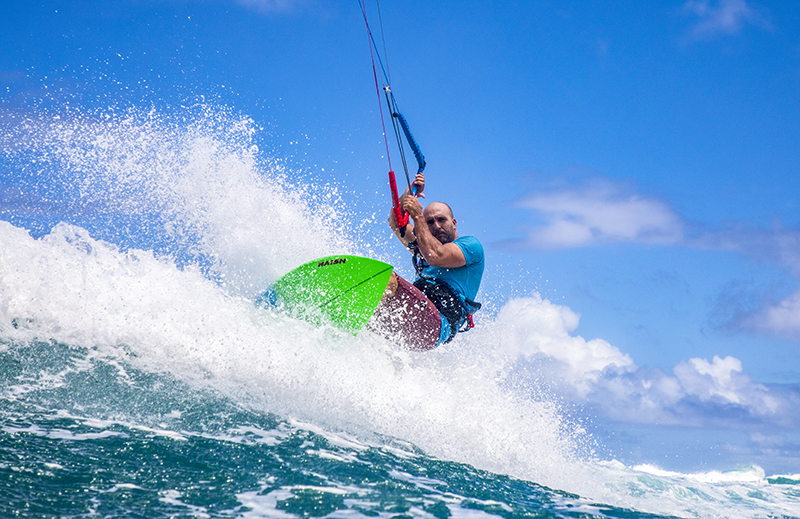
What are your thoughts on the competitive side of the sport at the moment and how important is it for you to have your riders at the top of the podium?
The importance of competition varies from market to market. There are places where the kitesurfing public follows the competitive side of the sport and there are markets where the average kiter does not follow it at all. I would say that it is overall less important than it once was. Much of this is due to the fragmentation and mismanagement of the professional kiteboarding tours, and some due to the fact that a lot of people just want to freeride and the pro side of things went very far into the park/wakestyle of riding that for most kiters is not super interesting. You could go to St Peter-Ording, the biggest Kitesurf World Cup on the tour, and see a lot of spectators… But next to the competition area were even more recreational kiters out riding themselves during the comp. You would not see a big football game with the stands half empty because fans preferred to play football for fun in the parking lot themselves instead of watching the pros. But for the core followers in each discipline, be it freestyle or park, waves, foil racing or Big Air, the pros have a purpose for sure. For us Big Air is important, because every kiter can relate to it… And going big is exciting and easy to understand for everyone, whether a kiter or not.
The sport has changed a lot in the last 20 years, but so have our lives in general – what are your thoughts on the impact of social media? Is it healthy for the riders and the sport or is it a distraction?
That is a huge question. I am not sure social media is good or healthy for anyone… Pro athlete or not. It is a necessary evil for athletes – let’s put it that way. I could go on and on and on here, but I have taken too long answering these questions already – and this one is a biggie! Social media provides a platform for people to be seen and heard and discovered and showcased. That is great. But turning the world into a big ‘look at me’ competition and making the loudest guy in the room the center of attention is not necessarily a good thing. I believe that humility is an asset. But humility is the polar opposite force to those at work through social media.
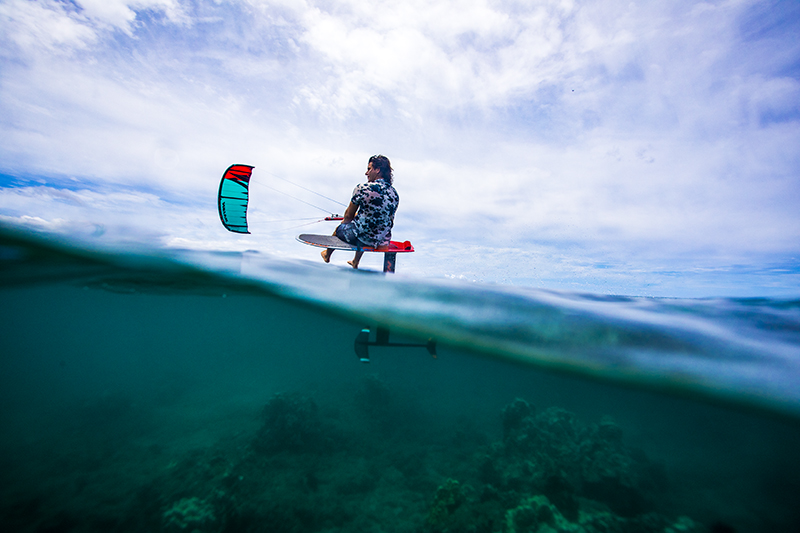
Do you think it is easier to aspire to be a pro rider today than it was 15 years ago, and what would your advice be to any aspiring watermen or waterwomen out there?
I think it is easier to develop the skills but there is a lot more competition now. What it takes is a love for what you do and conditions to train in. And no matter what, a lot of luck. You can create luck by working hard and not letting life’s distractions get in your way. Don’t drink, don’t smoke, ride smart and have fun.
Maui continues to be your home and – from what we hear – you spend as much time in the water as you ever have! What would be your perfect day on the island?
I am still very lucky to be able to do what I love and be on the water more than I deserve. Even with those two (hopefully the first and the last) injuries behind me, I was able to get back into pretty good shape. I am lucky there. I am also lucky to have ended up in sports where for forty something years I have been falling into water. I do not think I could have lasted this long otherwise. There is no perfect day. I love what I do. I enjoy the wind and the waves and all of the ways that I have been able to enjoy them. I take what I get – big waves or small, high wind or no wind. We have developed a lot of ways to enjoy the water now. Be it windsurfing or kitesurfing or SUP or surfing or foiling in all its forms. So there is pretty much always a perfect day for one of these, every day! And when not, I love spending time with my daughters, my girlfriend, working on my cars and even working working! I love designing boards, doing graphics etc too. Not every day, but as part of what I do. Life has to have balance. And I am very lucky to have had up to now a great balance of a lot of good things and not much bad.
Thanks for the questions, and I will see you on the water.
Aloha.
Robby
This article originally appeared in TheKiteMag #27. To subscribe, go here.
